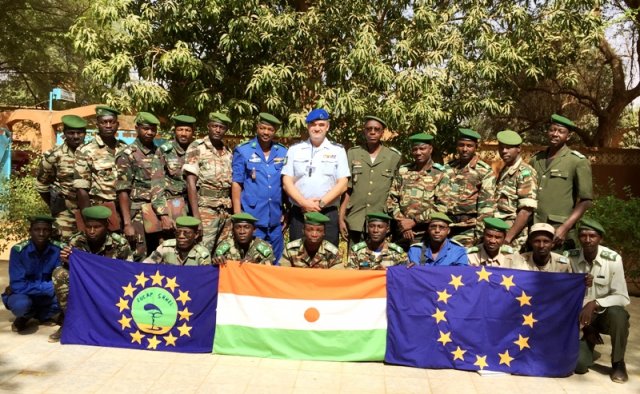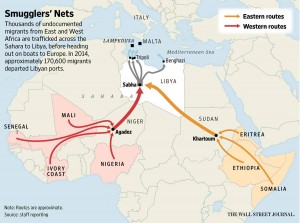
EU commits to boost border capacities of African countries
External Relations 29 June 2015It must not surprise that the consequences of the tragic crisis costing the life of thousands in the Mediterranean is yielding its effects well beyond its seashores. In the extraordinary European Council of April 23 the heads of State and Government fathered to define a comprehensive response to the crisis through the “10 points” list, a basic declaration that is still being operationalized in all related policy strands.
We know that its follow-up and all recent divisions among Member States reveal no unity of response, but there are some exceptions. One of the main policy drives in tackling the challenges stemming from the rise of the migratory inflow towards Europe is to address the matter under the Common Security and Defence Policy (CSDP) perspective. The marriage between external and internal policies in EU crisis response is quite an old and solid relationship, being the very ground of the definition of some CSDP Mission mandates in third countries, but the emerging necessities (as the relative lack of commitment in using other tools) are nonetheless strengthening this link.
The EU has a long history in supporting weakly or rather un-governable countries to manage their frontiers. Three border assistance missions (all called “EUBAM”) are currently deployed from Moldova and Ukraine to Palestine, in the Rafah crossing points. With the only exception of a similar mission in Libya, forced to end all of its activities due to the security situations, they had indeed a successful track of records, strengthening the rule of law as well as the host state capacities in peacefully managing their borders.
As the toll rises close to Europe, practitioners within the EU moved their attention towards the most critical transit areas closer to the beginning of migrants’ desperate journey, and some elements of the border assistance missions may well be integrated into other EU initiatives in Africa.

A truck overloaded with migrants and their belongings,
a typical view in Agadez’s crossings
Photo credits: aniamey.com
On 22 June, EU Foreign Ministers endorsed this perspective by strengthening the mandate of the EU civilian Mission in Niger. NEU already reported Brussels’ mounting activism in the region with the launch of a capacity building mission to Mali.
Brussels’ early aim was to boost Mali and Niger’s capacities in tackling terrorism, organized crime and the wider instability due to the political and security crisis affecting both countries. Against their very specific triggers that determined the current situation, the EU launched two missions, both called “EUCAP Sahel”, to contribute in ultimately stabilizing the region and contain the possible spill-over to neighbouring countries and the EU itself.
With the last Foreign Affairs Council decisions Niger will become the test case to see whether such missions may effectively play a role. Until today, EUCAP Sahel Niger was tasked to strengthen the internal security forces of the country with training, advising and mentoring activities, largely focusing its activities in the capital Niamey.

Main Western Africa routes are flowing into Agadez, where
smuggling activities became common business Photo credits: WSJ
EU services are currently assessing all the budgetary adjustments to implement the re-direction of EUCAP Sahel Niger’s mandate, but sources confirm it will be a relatively low-cost exercise. The mission will have to structure a permanent base in the city of Agadez, capital of the homonymous region that is now the infamous cradle of migrants smugglers. In the arid landscape of the Nigerien town it is not unlikely to witness the march of dozens of over-loaded trucks directed to Libya’s trafficking hubs.
The objective of the European experts on the ground will indeed be to permanently damage the network of those smugglers – that is often reportedly linked to high-ranking political authorities in Niamey, who enjoy business relationships with the truck companies that populate the convoys of despair. The biggest challenge will be the identification and the development of real economic alternatives for the local population, who often lives out of the share of such traffics due to the lack of sustainable activities. Economic, development, human rights and security should then all be merged in the most typical “comprehensive approach” fashion proudly stated by Justus Lipsius.
The picture risks remaining rather incomplete as, in the short-term, there is no alternative vision for all the actual individuals who are fleeing their poor or crisis-torn places. This new initiative is surely a measure to tackle the effects, rather than the root causes of the current migratory drama. While European countries may ease the weight of its consequences in their own territory, additional cooperation projects will be targeted to reduce the outflow from originating countries.
All in all, if all the gears will effectively work together, there remain space for optimism and in case of success the EU would have managed to pledge a rather complex tool like CSDP to address a cross-cutting and long-standing issue traditionally out its the scope.


